QUICK NAVIGATION
INTRODUCTION
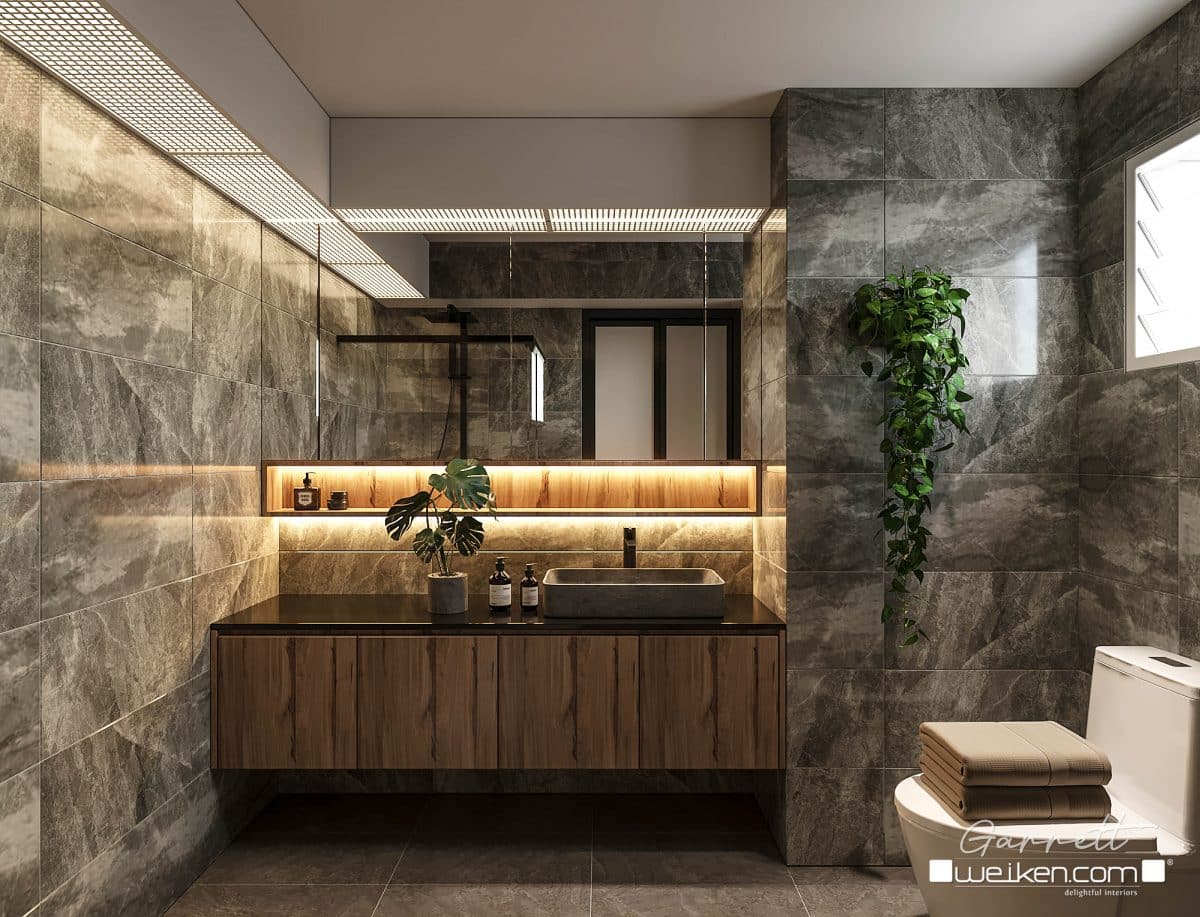
The bathroom is the tiniest room in the house. If you don’t want it to be dark and gloomy like those in scary movies, you should use sufficient lighting to lighten up the room. The function of a toilet light is more than just lighting. It also aids with tasks such as cleaning one’s face, hands, shaving, and, of course, applying makeup.
Toilet lights, in addition to offering convenience and efficiency, also improve the interior design of a bathroom. It defines the edges and draws attention to certain design elements. Bathrooms with lovely illumination appear opulent and elegant.
If you’ve always wanted a 5-star hotel kind of bathroom, here are a few toilet lighting ideas as well as tips on how to properly decorate with light to get you started.
In lighting design, there are 4 layers of light to be considered. These are:
1. Task Lighting
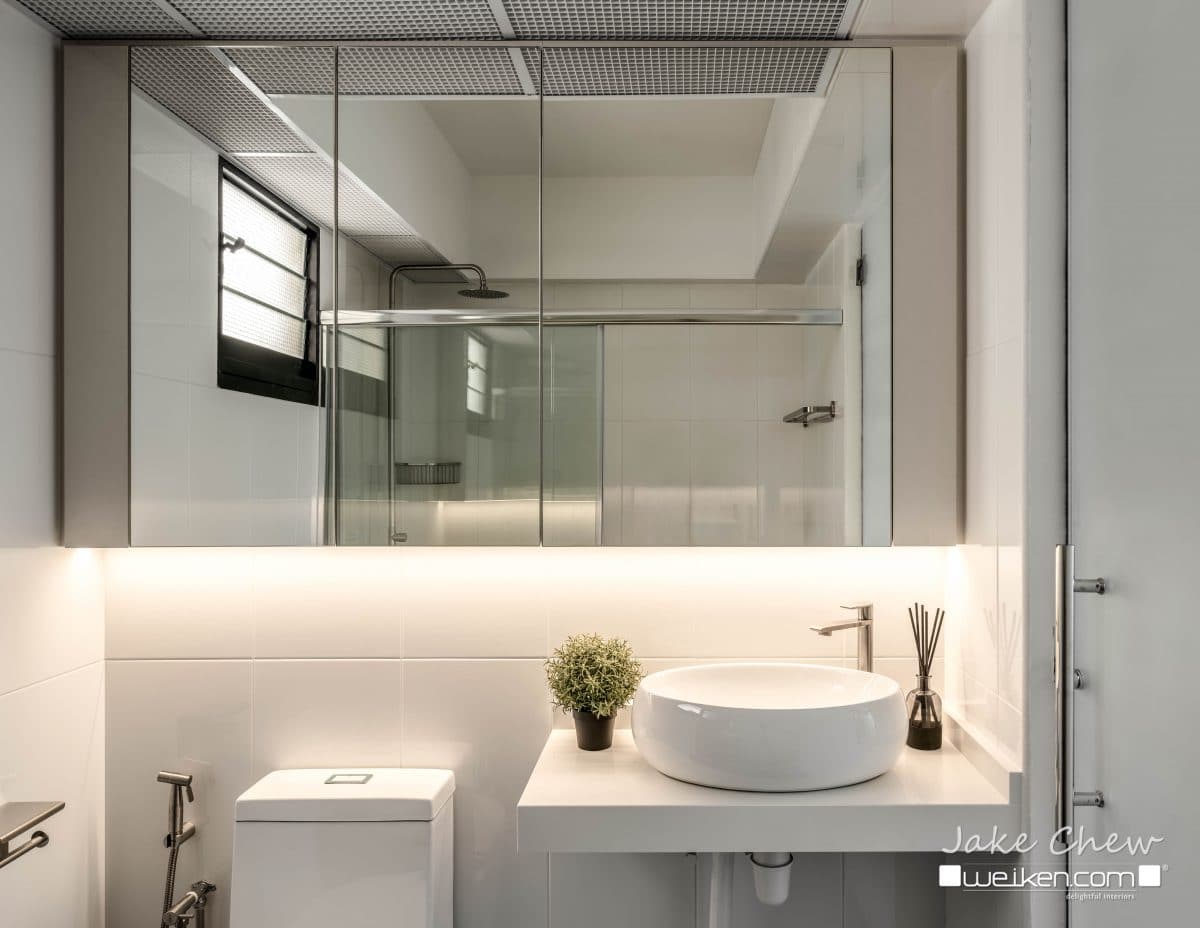
Task lighting refers to the light that illuminates the workplaces inside the bathroom. These workplaces usually are sinks and vanity countertops. The lights are mounted on the wall or under the cabinet.
A bathroom with proper task lighting installed is considered well-designed since it provides convenience to the user especially when doing meticulous tasks such as applying make-up, removing contact lenses, doing the hair, and shaving. In interior design, convenience and efficiency should always come first before aesthetics.
2. Ambient Lighting
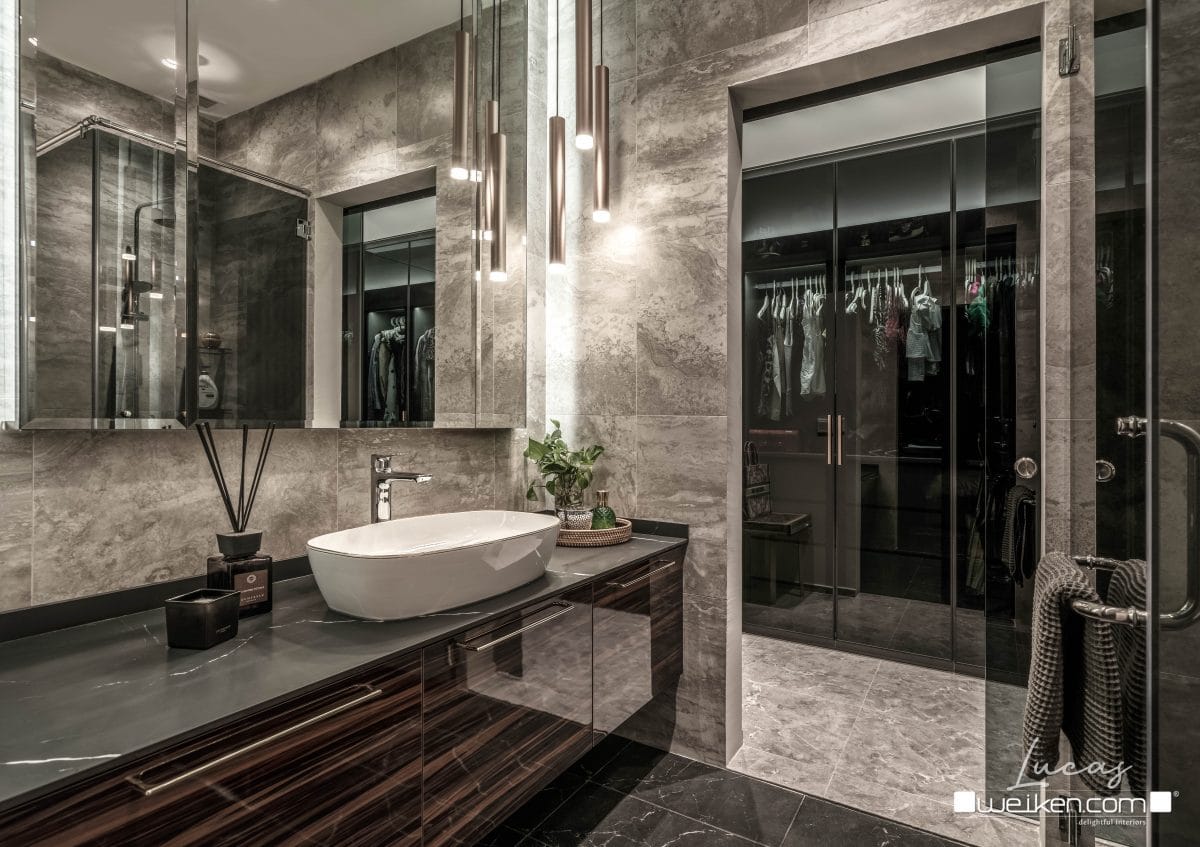
Ambient lighting, from the word itself, is the light that establishes the ambiance of the bathroom. It is the general light that illuminates all the areas and provides an equal distribution and lighting temperature on all corners of the space.
Ambient lighting enhances the sensation of warmth and depth in a room or place, in addition to providing basic lighting performance. Without ambient lighting, all forms of decorative lights will not be sufficient to make the bathroom look attractive.
3. Decorative Toilet Light
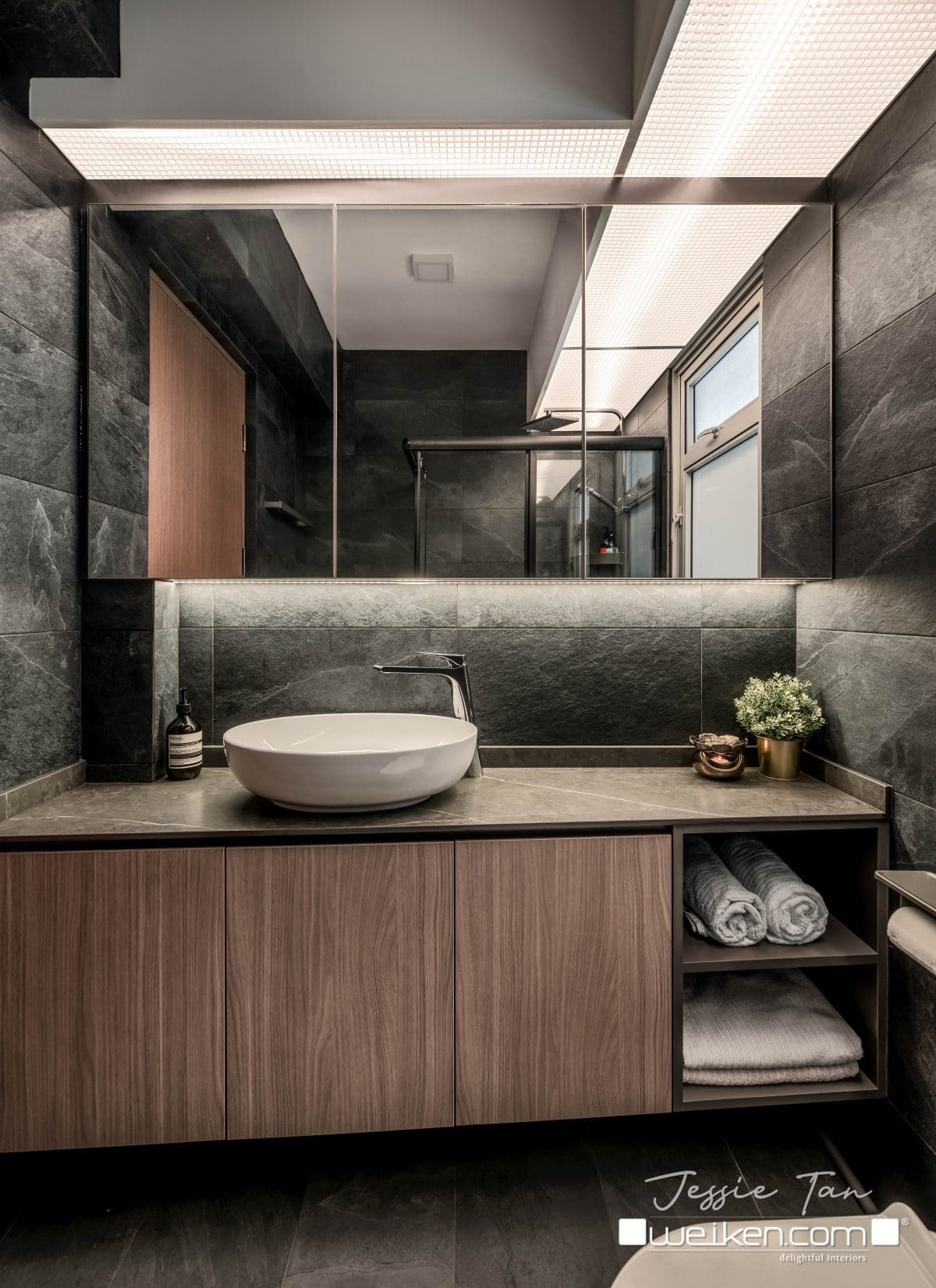
Decorative lighting serves as the cherry on top of every interior design. It adds character and personality to the space. Examples of these are lamps, chandeliers, sconces, and strip LED lights. The decorative lighting in the bathroom is usually the one that defines the style. A modern bathroom has rectangular sconces or strip lights. Traditional ones on the other hand have chandeliers and industrial-styled bathrooms tend to have vintage metal lamps.
4. Accent Lighting

Accent lighting highlights certain design features within the bathroom. Examples of these are can light and up lights, wall sconces, wall wash, toilet wall light, track lighting, and torchieres. They are often placed on either side of a decorative panel or on top of artworks to highlight them in the wall. Accent lighting is less important in the toilet but adding a few will surely enhance the interior of your bathroom.
What Type of Bulb Should You Use in A Bathroom?
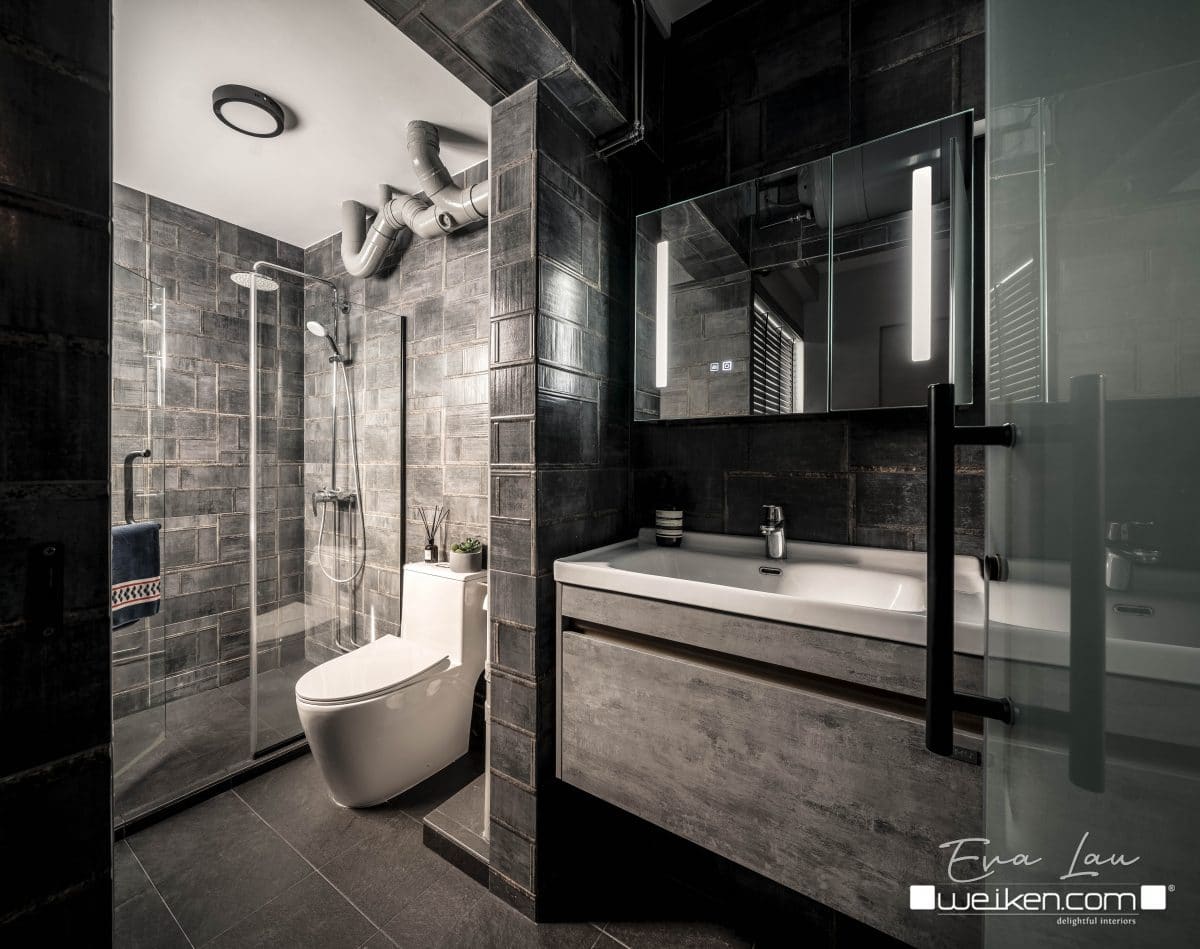
We’ve talked about 4 layers of light but we haven’t touched on the most important part – which is basically the type of bulb. Task, accent, decorative, and ambient lightings won’t be able to serve their part if you fail to choose the right bulb. So, what type of bulb should you actually use in the bathroom?
• Energy Efficient
Select a light bulb that’s energy-efficient. Energy-efficient light bulbs emit less heat, reducing the amount of work your air conditioner has to do to keep your room at a suitable temperature. Bulb disposal is less wasteful with energy-efficient bulbs since they live longer.
• Temperature
The ideal lights for the bathroom are those branded “daylight,” which have a color temperature of 5000K to 6500K, or bulbs classified “cool white” or “bright white,” which have a color temperature of 3500K to 4100K.
When it comes to wattage, for adequate bathroom illumination, you’ll need bulbs that are at least 60 watts. You might wish to use 75-watt-equivalent bulbs if your bathroom is really spacious or you like it to be brighter.
• Shape
Globe-shaped bulbs, which are more appealing than ordinary lights, are frequently used in bathroom vanities.
• Type
LED bulbs are significantly more energy-efficient, last much longer, and don’t produce nearly as much heat as incandescent. As a result, LED lights are the greatest option for illumination in bathrooms.
• CRI Rating
A CRI of 90+ indicates great color contrast and brightness in bathroom lighting. This is great for putting on make-up or doing any other work that requires careful application.
Common Mistakes to Avoid When Designing Lighting for Bathroom

1. Avoid Shadows
Shadows are created when the lighting is not placed in the appropriate direction. For example, when you look in the mirror and you find it hard to put your makeup on because of shadow that’s blocking your view, you need to configure your lighting placement. To produce cross lighting, place two wall-mounted lamps at eye level on either side of the mirror.
2. Awkward lighting placement
Placing your light in inappropriate height and position can break the overall scheme. Make sure that your lighting placement is plotted accurately before installing them. Seek the advice of an interior designer for better clarity.
3. Disregarding Color Temperature
Using a light bulb with a lower CRI than recommended might make the bathroom hue seem odd. Similarly, choosing a lighting fixture with a greater or higher temperature might have an unanticipated influence on the bathroom’s overall look.
4. Not Having Enough Light
If you don’t have enough lighting fixtures installed, it can obviously make the bathroom look a bit darker. Most people tend to go for a light bulb that’s brighter than what is suggested thinking that it would be enough to light up the room.
But not following recommendations from professional interior designers can have repercussions which can be seen in the outcome. It’s better to stick to the appropriate specifications provided to ensure a quality result.
5. Too Much Light
In the same way, too much light can also make your toilet light a flop. If your bathroom has windows or has access to natural lighting, pick a light bulb with enough CRI rating and temperature that will complement and blend smoothly with the natural light that comes into the room. Too much light not only breaks the interior design look but also consumes a lot of energy.
There are a lot of processes that go into designing a toilet light for the bathroom. It’s actually not as simple as putting light bulbs and installing beautiful fixtures. But don’t fret just yet. While it may seem like a very extensive and challenging task, we are here to guide you. We hope you’ve learned more about bathroom lighting design in this blog. If you need assistance, feel free to send us an email.
Related Posts
-
QUICK NAVIGATION About HDB Kitchen Design Popular Themes for HDB Kitchen Design Explore Popular Interior Styles Key Points To Consider When Transforming Your HDB Kitchen Tailoring HDB Kitchen Design to Different Flat Types Conclusion About HDB Kitchen Design Designing or renovating the kitchen of your HDB flat or BTO unit is quite an overwhelming task. […]
-
QUICK NAVIGATION Introduction About Shelves For A Wall Popular Types of Shelves for a Wall in Singapore Attractive Designs of Shelving on Walls Viable Functionality of a Wall Shelf in Singapore Material Utilization for Making Wall Shelves Singapore Conclusion Introduction About Shelves For A Wall Along with storage options like drawers, wardrobes, cupboards, etc., shelving […]
-
QUICK NAVIGATION Introduction What Is A Flush Mount Sink? Flush Mount vs Undermount Sink Characteristics of A Flush Mount Sink in Singapore Pros and Cons of A Flush Mount Sink Hachi Flush Mount Sink Interior Themes that Well Match with a Flush Mount Sink Conclusion Introduction A Flush Mount Sink is a type of sink […]
-
QUICK NAVIGATION Introduction What Is Space Planning? Popular Landed Home Types To Do Room Planning Plan Of A 3-Bedroom House Plan Of A 4-Bedroom House Layout Of A Living Room Conclusion Introduction Image source: emmersonandfifteenth.com Before moving to another home or purchasing a property, the floor plan of the area is one of the fundamental […]




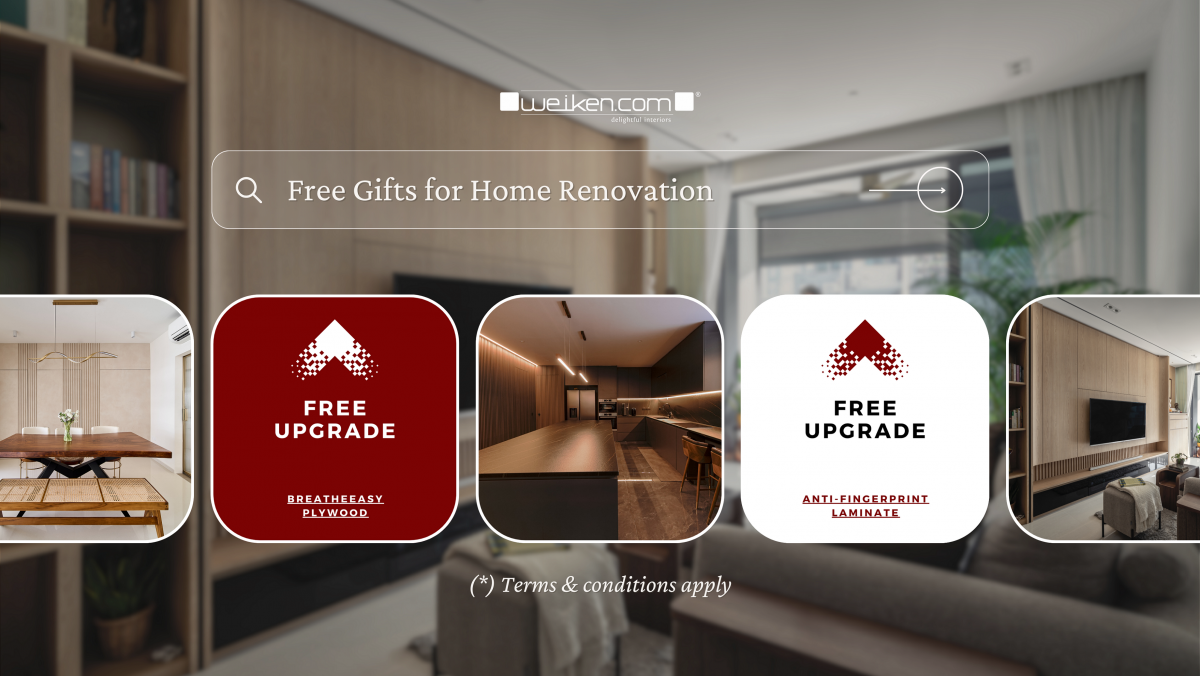
Leave a Reply